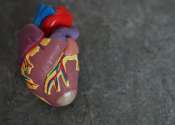The emergency department (ED), sometimes termed the emergency room (ER), emergency ward (EW), accident & emergency (A&E) department or casualty department is a hospital or primary care department that provides initial treatment to patients with a broad spectrum of illnesses and injuries, some of which may be life-threatening and requiring immediate attention. Emergency departments developed during the 20th century in response to an increased need for rapid assessment and management of critical illnesses. In some countries, emergency departments have become important entry points for those without other means of access to medical care. The abbreviation ER is generally used throughout the United States, while A&E is used in many Commonwealth nations. ED is preferred in Canada and Australia, and Casualty is common in Scotland.
Upon arrival to the ED, people typically undergo a brief triage, or sorting, interview to help determine the nature and severity of their illness. Individuals with serious illnesses are then seen by a physician more rapidly than those with less severe symptoms or injuries. After initial assessment and treatment, patients are either admitted to the hospital, stabilized and transferred to another hospital for various reasons, or discharged. The staff in emergency departments can include not only doctors and nurses, but physician assistants (PAs) and nurse practitioners with specialized training in emergency medicine and in house Paramedics and/or emergency medical technicians, respiratory therapists, radiologic technologists, Healthcare Assistants (HCAs), medical scribes, volunteers, and other support staff who all work as a team to treat emergency patients and provide support to anxious family members. The emergency departments of most hospitals operate around the clock, although staffing levels are usually much lower at night. Since a diagnosis must be made by an attending physician, the patient is initially assigned a chief complaint rather than a diagnosis. This is usually a symptom: headache, nausea, loss of consciousness. The chief complaint remains a primary fact until the attending physician eventually makes a diagnosis.









